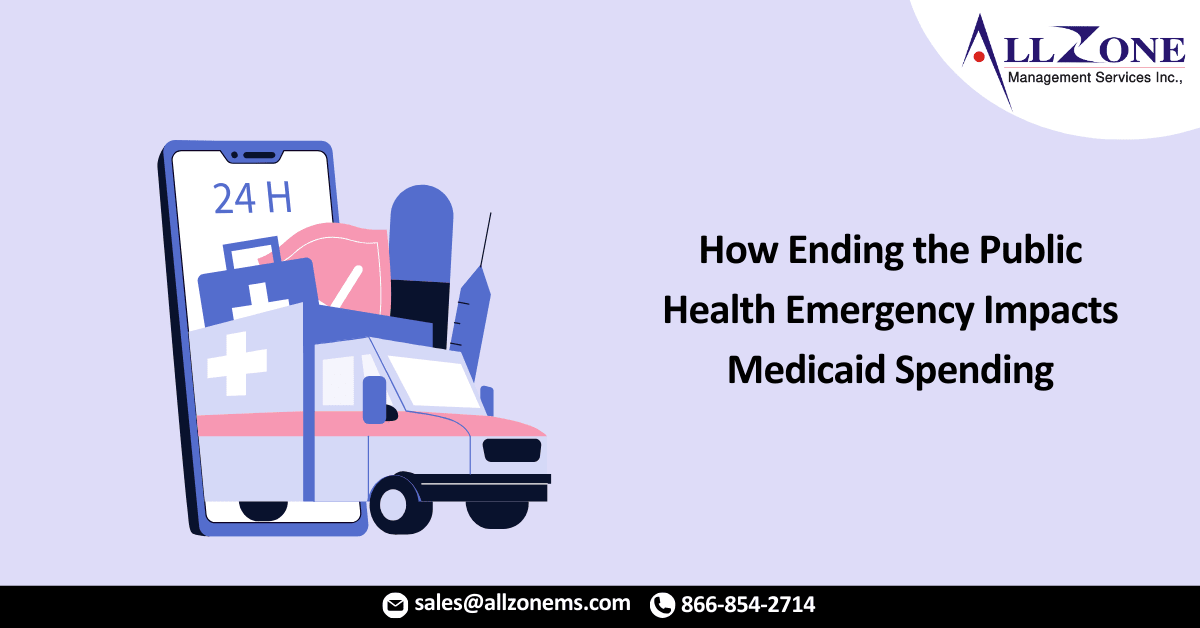States should prepare for fluctuations in Medicaid spending on nonelderly acute care after the declaration ends.
The end of the coronavirus public health emergency declaration could lead to a shift in Medicaid spending for state Medicaid programs and federal Medicaid costs, according to a report from the Robert Wood Johnson Foundation and Urban Institute.
States have received certain flexibilities and influxes in federal contributions certain flexibilities and influxes in federal contributions to Medicaid spending to help manage costs related to the pandemic’s surge in Medicaid enrollment and the program’s continuous coverage requirements.
However, these supports are dependent on the existence of the public health emergency. The Department of Health and Human Services (HHS) has extended the public health emergency eight times and is currently set to expire in April 2022.
When the public health emergency ends, declining Medicaid enrollment will strongly influence state Medicaid spending. However, Medicaid programs that adhered to specific federal requirements would lose the 6.2 percent boost to the federal medical assistance percentage, influencing Medicaid spending upward.
If the public health emergency ends in April 2022 at the end of the first quarter, states are expected to spend $205.0 billion in 2022 and $203.9 billion in 2023 for a total of $408.9 billion in Medicaid spending between the two years.
However, experts have indicated that it seems likely that the public health emergency will be extended since states have not received a 60-day warning about the declaration’s expiration.
If the public health emergency goes beyond April 2022 and ends in the second quarter, state Medicaid programs are expected to spend 1.2 percent more on nonelderly acute care overall in 2022 and 2023 than they would with a first-quarter expiration date.
With a second-quarter public health emergency expiration date, state Medicaid spending on nonelderly acute care is projected to equal $206.9 billion in 2022 and $207.0 billion in 2023.
If the public health emergency continues even longer and ends in the third quarter, state Medicaid programs’ nonelderly acute care costs could be 2.7 percent higher.
However, these overall projections do not capture the dramatic fluctuations in spending that states could experience.
Regardless of when the public health emergency ends, states are expected to see a slight drop in spending in the quarter immediately following the expiration. Then, states will experience a significant boost to nonelderly acute care spending in the second quarter after the public health emergency expires. Finally, Medicaid spending will slope downward for about two quarters.
The researchers estimated that the scenario with the highest state Medicaid spending for nonelderly acute care would occur in the first quarter of 2023 if the public health emergency expired in the third quarter of 2022.
Federal Medicaid spending on nonelderly acute care is expected to follow a smoother path than state Medicaid spending.
If the public health emergency is not extended, the researchers anticipated that federal acute care Medicaid spending would drop $20.3 billion between the end of the public health emergency and the end of 2023. They estimated that acute care costs would hit $114.7 billion during the public health emergency and then drop to $94.4 billion by December 2023.
Federal Medicaid spending could be as high as $121.7 billion if the public health emergency continues into the third quarter of 2022, compared to $118.2 billion in the second quarter of 2022 if the flexibilities end after the second quarter of 2022.
“Most people losing Medicaid but not gaining eligibility for PTCs or CHIP would have access to health coverage through a family member’s employer,” the researchers noted. “But these alternative coverage sources, particularly employer coverage, would likely cost the affected families much more than Medicaid.”
Each public health emergency expiration scenario has its trade-offs. If HHS continues to extend the declaration, states may be more prepared for the end of the public health emergency.
But a longer public health emergency also means that a larger number of Americans might come to rely on Medicaid, which means that a larger population of Americans would be impacted by the end of the declaration. It would also heighten states’ urgency around processing enrollments and disenrolling beneficiaries, leading to mistakes.
“The Medicaid continuous coverage requirement has provided stable health coverage to millions of people during the pandemic, but the longer it lasts, the more people will be affected after it ends,” the researchers concluded. “Each extension would make it even more important for states to prepare now to minimize inappropriate disenrollment and losses of health coverage.”
For more information: How ending the public health emergency impacts medicaid spending

